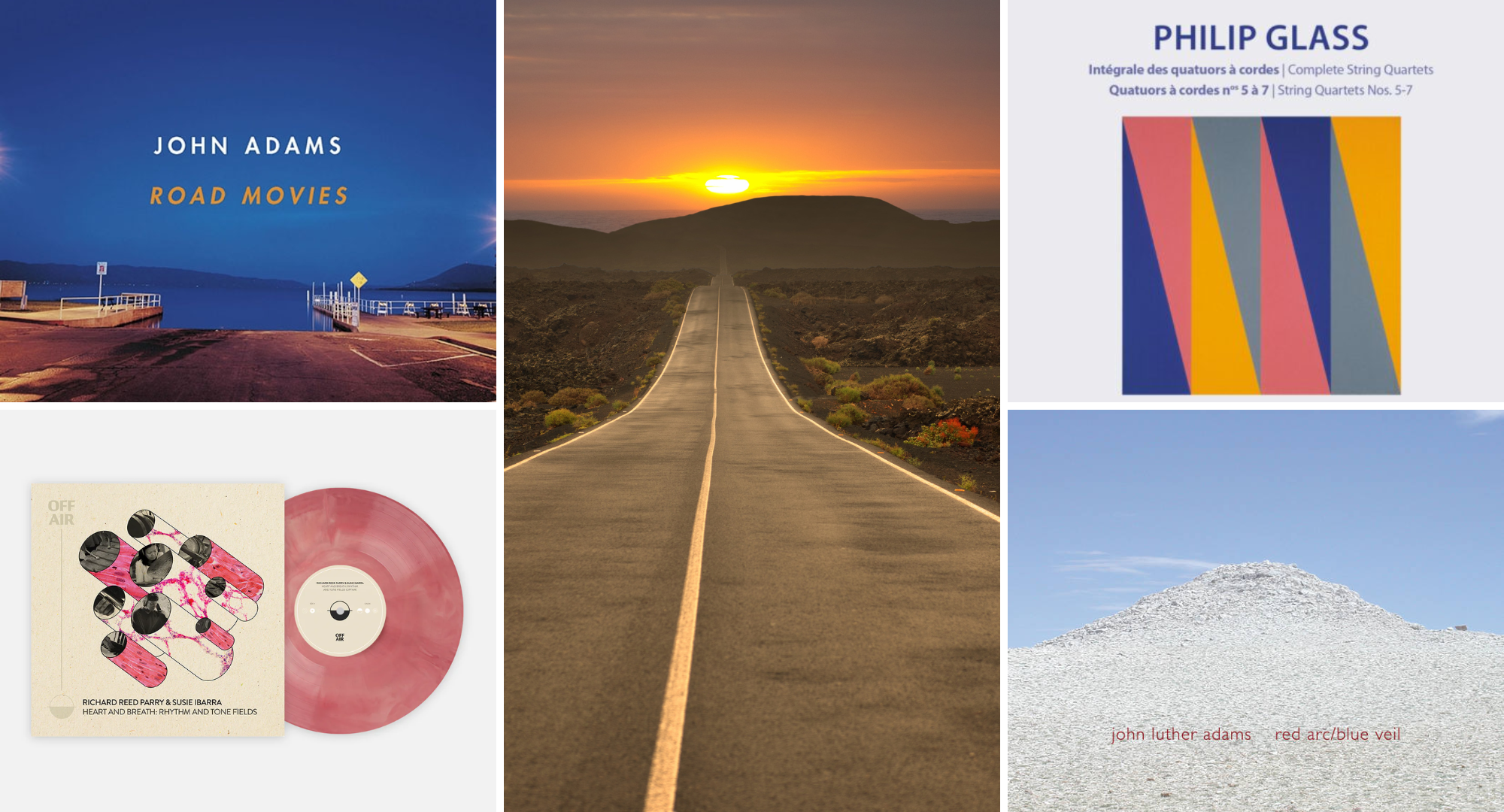I volunteer at the Desert Botanical Garden and a few weeks ago, I heard some patrons chatting. One of them said, “I don’t think anyone can truly appreciate the expanse of the country without taking a road trip.” My initial thought was “Challenge accepted” and started thinking about ways to explore expanse and vastness with sound, which has very limited travel time. If anyone in Phoenix is interested in some fun site-specific work, I have ideas. In the meantime, I’ve put together this playlist which is music that feels, at least to me, expansive and exhilarating.
I give this playlist a Difficult Listening Hour rating of 4/10.
To have these playlists delivered to your inbox every week, sign up for my newsletter.
1 – 3. Road Movies by John Adams performed by Leila Josefowicz and John Novacek. Album: Road Movies. Fund fact, I was a page turner for this piece once in grad school and I almost died it moved so fast. From Pitchfork, ” “Road Movies” is a piece for solo violin and piano, and while its second movement, “Meditative”, is a quiet masterpiece, casting a fragile fog of empty fourths and fifths around a slight bluesy lilt, the first and last sections of the piece are underwhelming. Adams attempts to capture the frantic energy of bluegrass fiddling here, but the solo violin turns out to be a misjudgment of instrumentation. It doesn’t have enough harmonic complexity to carry the force of its repetitive motives and static sixteenth notes against the percolating figures of the piano.”
4. Red Arc/Blue Veil by John Luther Adams. Album: Red Arc/Blue Veil. I first heard this piece at the Ojai Music Festival. It was outside. There were birds. It was amazing. From the composer, “Red Arc/Blue Veil (2001) is the first piece in a projected cycle exploring the geometry of time and color—what Kandinsky called ‘those inner sounds that are the life of the colors.’ As in all of my recent music, I imagine the entire ensemble (piano, percussion, and processed sounds) as a single instrument, and the entire piece as a single complex sonority. The processed sounds are derived directly from the acoustical instruments…. In Red Arc/Blue Veil, the electronic sounds are layered in tempo relationships of 3, 5 and 7, while the piano and mallet percussion trace a single arc, rising and falling from beginning to end. Red Arc/Blue Veil was commissioned and premiered by Ensemble Sirius.”
5. The Tender Land Suite: III Finale by Aaron Copland. Album: COPLAND: The Tender Land Suite / Piano Concerto / Old American Songs (arr. for chorus). This depression-area set opera is one of my favorite Copland works. And you can’t have a playlist talking about the expanse of America without those wide Copland sounds.
6. String Quartet No.5: III by Philip Glass performed by Quatuor Molinari. Album: Glass: Complete String Quartets- Nos. 5-7. “Philip Glass’ Fifth String Quartet is the most substantial of his five quartets and the most traditional, using formal structures and expressive contrasts which go far beyond minimalism. While maintaining Glass’ unmistakable personal style, this is a quartet which delivers both driving energy and an unforgettable, threnody-like tenderness.” -CD liner notes
7. Field I: After C by Richard Reed Parry (Arcade Fire) and Susie Ibarra. Album: Heart and Breath: Rhythm and Tone Fields. About the album, “Heart And Breath: Rhythm And Tone Fields was conceived of and created by multi-instrumentalist and composer Richard Reed Parry of Arcade Fire and world renowned percussionist and composer Susie Ibarra. Parry and Ibarra created an album of time-based pieces by focusing their attention and awareness on the rhythm and tone of their breath and heartbeats, using their pulse to inform the rhythm of their metronome. The compositions that emerged are hypnotic fields of sound that seem to float suspended in time and space, unfolding gently in a manner that is at once intimate and expansive, and which connects the listener to their own most primal, internal body rhythms.”
8 – 12: Concerto for Wind Ensemble by Kevin Day performed by the ASU Wind Ensemble, directed by Jason Caslor. Album: Concerto for Wind Ensemble by Kevin Day. The composer talking about this work, “My experience and the inspiration for this work come from a world of various intersections. My father, born in West Virginia, was a hip-hop producer in the late 1980s who worked in Southern California, and my mother (also from West Virginia) was a gospel singer. During my childhood, I grew up listening to hip-hop, R&B, jazz, and gospel music, while simultaneously, I was learning classical music through playing in band, and later orchestra. I was playing jazz & gospel music on piano, while also playing classical music on euphonium and tuba. This dual learning environment had a huge impact on my musicianship and my development as a composer. While these worlds had been separated in my head when I was growing up, in this work I intentionally wanted to merge them together in new fusions, paying homage to my parents, the culture I grew up in, and to the wind band world.”
13. Field VI: Floating Harmonic Rotation by Richard Reed Parry (Arcade Fire) and Susie Ibarra. Album: Heart and Breath: Rhythm and Tone Fields.

